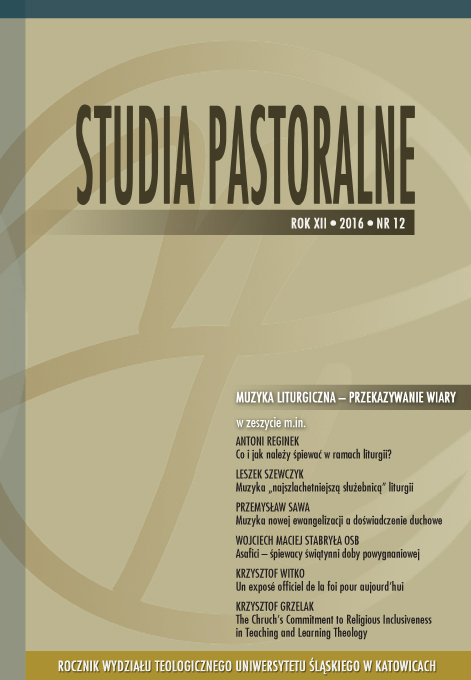The Church’s Commitment to Religious Inclusiveness in Teaching and Learning Theology at the University Level in South Africa
The Church’s Commitment to Religious Inclusiveness in Teaching and Learning Theology at the University Level in South Africa
Author(s): Krzysztof GrzelakSubject(s): Christian Theology and Religion, Theology and Religion
Published by: Księgarnia Świętego Jacka
Keywords: religious inclusiveness; interfaith dialogue; Catholic institutions of higher education; South African context of religious diversity; St Joseph’s Catholic Theological Institute
Summary/Abstract: One of the major tasks facing Catholic theological education at the undergraduate level nowadays is that of helping to equip the churches and their leadership to respond to the growing raise of globalization, multiculturalism, religious diversity, and multiple religious belonging. In this new context, the Catholic institutions of higher education are required to help their students gain a competent knowledge of the non-Christian religions and develop a genuine openness to work with “others” for peace and unity in the world. The Catholic institutions should help future church leaders to overcome their ignorance about the other religions and thus understand better God’s self-revelation in the one salvation history, especially recognizing the unique and universal role of Christ in it.The article firstly describes the contemporary context of religious diversity which creates new opportunities for the church to engage with religions. It defines “religious inclusiveness” not as a form of religious syncretism (incorporation of some doctrines, moral rules, myths, rituals or practices of other religions) but as a theological approach that gives equal attention to two essential Christian convictions: God’s love is universal and therefore reaches other believers; and God’s love is particular and is made visible in Jesus. The author argues that the idea of religious inclusiveness is not new; in fact it goes back as far as early Christianity, finds support in the documents of the Second Vatican Council, and is present in the post-conciliar magisterium, especially in the apostolic constitution Ex corde Ecclesiae (1990) by Pope John Paul II.In its further stage, the article pays attention to practical ways of implementing education for religious inclusiveness at the undergraduate level in Catholic institutions of higher learning by analysing a number of important areas: the urgency of theological education for religious inclusiveness; the significance of courses on interreligious dialogue; studying theology from a comparative perspective and other faiths’ spirituality; and testing theological studies through praxis and dialogue of life. The analysis ends by attempting to apply the above practical ways of teaching and learning theology to the South African context of religious plurality.
Journal: Studia Pastoralne
- Issue Year: 2016
- Issue No: 12
- Page Range: 204-219
- Page Count: 16
- Language: English

